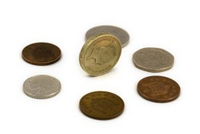 So you want to start 3D printing, but you have no money? It is possible to do 3D printing without much cash, and for starters you’d need to prepare your 3D model for printing. But how to do this without cash? Two ways: simply use a 3D model from a well-stocked repository or design a model yourself.
So you want to start 3D printing, but you have no money? It is possible to do 3D printing without much cash, and for starters you’d need to prepare your 3D model for printing. But how to do this without cash? Two ways: simply use a 3D model from a well-stocked repository or design a model yourself.The best repositories are Thingiverse, Google Sketchup 3D Warehouse, Ponoko or TurboSquid. You might have to pay for models from Ponoko and TurboSquid, but the others have many free models.
If you’re preparing the 3D model yourself, you’ll need a software package, and a fairly sophisticated one at that. 3D modelling can be quite complex, and you’ll likely need to take several tutorials to get your legs if you haven’t done it before. While you could spend a lot of money, even exceeding USD$10,000, on commercial 3D packages, here are the two major popular 3D modelling software options that are available at no charge:
- Blender: a full-featured, multiplatform 3D modelling package, capable of doing much more than simply modelling 3D objects, as it includes rendering, animations, particles and much more. The downside to Blender is its interface, which some find very difficult to learn.
- Google Sketchup: a basic 3D modelling program specifically designed to be simple to use. Indeed one often finds K-9 students deeply engrossed in Sketchup building fantasy homes or castles. The downside to Sketchup is a relative lack of advanced features you’d find in Blender. Sketchup has many plugins available, one of which enables export of .STL files suitable for 3D printing.
If you’re just starting out, one approach might be to learn the concepts with the simple Sketchup interface, then move on to the more complex Blender when you’re ready.
Another approach often used is to obtain a model from a repository and then edit it using a modelling program. Multiple objects can also be combined into more complex items.
Having completed your design, we’ll next move on to printing on the cheap.

